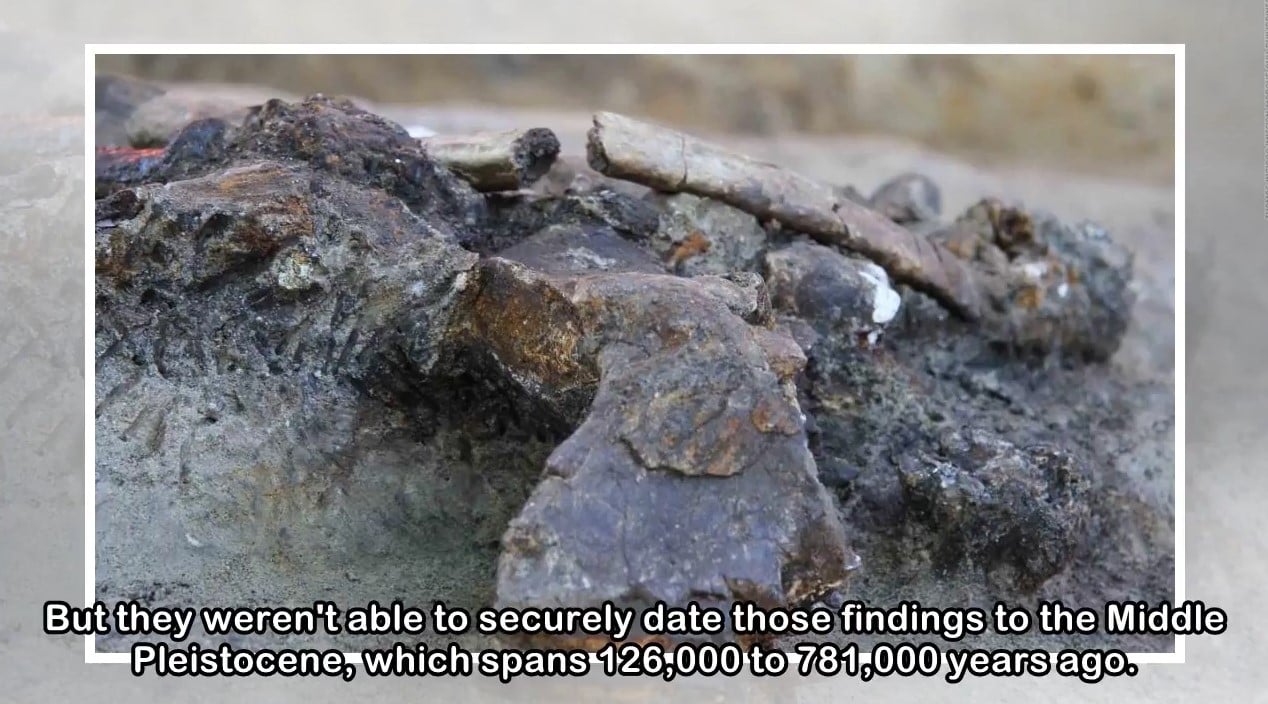Scientists have discovered a collection of ancient bones and stone tools in the Philippines. This discovery changes the view humanity had on archaic human migration, while suggesting that our ancestors lived in the Philippines much earlier than we originally thought.
The findings unearthed on the Philippines’ largest island in Luzon’s Kalinga province also includes a carcass of a Rhinoceros and the remains of Philippine brown deer, freshwater turtle, monitor lizard, and stegodon – a relative of elephants that is now extinct. There were also 57 stone tools, of which 50 seem to be sharp-edged flakes, and two that are believed to be hammer stones.
Scientists had thought, from previous fossil evidence, that early humans migrated to the Philippines around 67,000 years ago. However, the latest discovery moves that timeline. The researchers unearthed the Rhino fossil, that had been butchered using tools that resemble those that were used between 777,000 and 631,000 years ago.
Scientists referred to dating methods including the electron Spin Resonance, argon dating, uranium series dating and other techniques to determine whether the rhino was butchered at the estimated time. They noted several cut-marks on the bones, as well as the left and right humerus bones appeared to be hit with hammer stones to get at the marrow.
That means that the ancient humans used those stone tools in the Philippines before Homo sapiens arrived. However, it was unclear who those humans were and how they came to the area as there were no other human fossils or artifacts that are associated with that movement.
Gerrit van den Bergh, the study’s co-author from the University of Wollongong suggests that it was possibly Homo erectus that used some kind of watercraft to move from north to south with the flow of the ocean currents. His theory further suggests that they passed through the Philippines on their way towards Flores where Homo floresiensis, also known as the Hobbit population, was present.
“If you look at the fossil and recent faunas you see that there is an impoverishment as you go from north to south,” van den Bergh said in a statement. “On Luzon, you find fossils of stegodons, elephants, giant rats, rhino, deer, large reptiles and a type of water buffalo. On Sulawesi, the fossil fauna is already impoverished; there’s no evidence of rhinos or deer ever entering there. Then on Flores, you only had stegodons, Komodo dragons, humans and giant rats, that’s all.”
“If animals did reach these islands by chance, by entering the sea and following the currents south, then you would expect the further south you go the fewer species you would find — and that’s what we see,” the researcher added.
The team’s findings were published on May 2 in the journal Nature. The study further explains that tsunamis, from tectonic activity present in that area, could be associated with the travelling of the ancient humans toward Flores, as per the stone tools in the Philippines. The team’s latest work could lead the team toward new discoveries which could shed more light on human migration.
[SOURCE]




